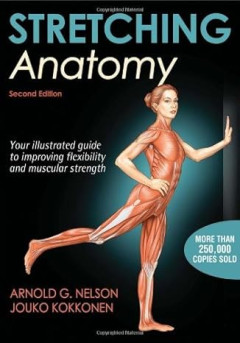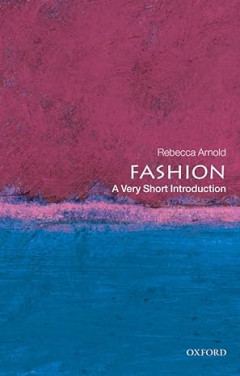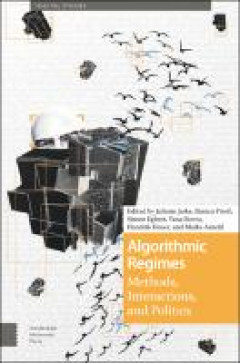Ditapis dengan
E-book Music and Spirituality : Theological Approaches, Empirical Methods, an…
The composer Sir James MacMillan has called music ‘the most spiritual of the arts’, and for many people, both religious and non-religious alike, this rings true.1 But what do people mean by ‘music’ and ‘spiritual’ in this context, and what is the nature of their perceived relationship? Do certain kinds of music more readily afford spiritual experiences than others? What …
- Edisi
- -
- ISBN/ISSN
- 9781805113041
- Deskripsi Fisik
- 480 hlm
- Judul Seri
- -
- No. Panggil
- 781.7 ARN m
E-book Annunciations : Sacred Music for the Twenty-First Century
In Sacred Music in Secular Society, Jonathan Arnold highlights a strange phenomenon: ‘the seeming paradox that, in today’s so-called secular society, sacred choral music is as powerful, compelling and popular as it has ever been’.1 The explosion of new media through the internet and digital technology has created a new, broader audience for ‘the creative art of Renaissance polyphony …
- Edisi
- -
- ISBN/ISSN
- 9781783747283
- Deskripsi Fisik
- 397 hlm
- Judul Seri
- -
- No. Panggil
- 780.72 JAN a
E-book Sustainable Enterprise Value Creation : Implementing Stakeholder Capit…
Modern civilization is at a crossroads, at a potential inflection point in its historical evolution. The scientific community has advised that the window for decisive collective action to stabilize greenhouse gas emissions and avoid catastrophic impacts on people and the planet will close within a decade. The COVID-19 pandemic has created one of the worst health and socio-economic …
- Edisi
- -
- ISBN/ISSN
- 9783030935603
- Deskripsi Fisik
- 299 hlm
- Judul Seri
- -
- No. Panggil
- 658.02 SAM s
E-book Papua New Guinea & Solomon Islands
Complemented by easy-to use, reliable maps, helpful recommendations, authoritative background information, and up-to-date coverage of things to see and do, these popular travel guides cover in detail countries, regions, and cities around the world for travelers of every budget, along with extensive itineraries, maps with cross-referencing to the text, "Top 10" and "Top 5" lists, and other pract…
- Edisi
- -
- ISBN/ISSN
- 9781740592079
- Deskripsi Fisik
- 471 halaman, ilus.
- Judul Seri
- -
- No. Panggil
- 910 BUR p

E-book Stretching Anatomy
How much stretching should the average person do every day? Most people tend to overlook this important fitness routine altogether. Those who do stretch tend to perform a very brief routine that concentrates mainly on the lower-body muscle groups. In fact, it would be generous to suggest that people stretch any particular muscle group for more than 15 seconds. The total time spent in a stretchi…
- Edisi
- -
- ISBN/ISSN
- 9781450438156
- Deskripsi Fisik
- 261 halaman, ilus.
- Judul Seri
- -
- No. Panggil
- 611.7 NEL s
E-book The Biology of the First 1,000 Days
According to current estimates, 23% of the world’s children under 5 years of age are stunted, a condition that is measured using short height-for-age (see Box 1.1) [1]. Although this represents a decline from 33% in 2000, the fact that 156 million chil-dren globally still suffer from chronic undernutrition underscores the continued need for renewed efforts and inno…
- Edisi
- -
- ISBN/ISSN
- 9781315152950
- Deskripsi Fisik
- 519 hlm
- Judul Seri
- -
- No. Panggil
- 618.2 ALL t

E-book Fashion: A Very Short Introduction
Fashion is a dynamic global industry that plays an important role in the economic, political, cultural, and social lives of an international audience. It spans high art and popular culture, and plays a significant role in material and visual culture. This book introduces fashion's myriad influences and manifestations. Fashion is explored as a creative force, a business, and a means of communica…
- Edisi
- -
- ISBN/ISSN
- 9780199547906
- Deskripsi Fisik
- 157 halaman
- Judul Seri
- -
- No. Panggil
- 646.3 ARN f

E-book History: A Very Short Introduction
There are many stories we can tell about the past, and we are not, perhaps, as free as we might imagine in our choice of which stories to tell, or where those stories end. John Arnold's addition to Oxford's popular Very Short Introductions series is a stimulating essay about how people study and understand history. The book begins by inviting us to think about various questions provoked by our …
- Edisi
- -
- ISBN/ISSN
- 9780192853523
- Deskripsi Fisik
- 152 halaman
- Judul Seri
- -
- No. Panggil
- 900.0 ARN a

E-Book Algorithmic Regimes: Methods, Interactions, and Politics
Algorithms have risen to become one, if not the central technology for producing, circulating, and evaluating knowledge in multiple societal arenas. In this book, scholars from the social sciences, humanities, and computer science argue that this shift has, and will continue to have, profound implications for how knowledge is produced and what and whose knowledge is valued and deemed valid. To …
- Edisi
- -
- ISBN/ISSN
- 9789463728485
- Deskripsi Fisik
- 348 halaman
- Judul Seri
- -
- No. Panggil
- 518.1 JAR a
E-book Handbook of Fish Biology and Fisheries
According to the United Nations Food and Agricultural Organization (FAO), there was a steady increase of fish catches until the middle of the 1990s when the catch began to level off (Fig. 1.1). Recent work by Watson and Pauly (2001) has shown that in reality the total marine catch of fish has been declining by some 10% a year since 1988. The apparent continued increase until the mid1990s was du…
- Edisi
- Vol. 1
- ISBN/ISSN
- 0632054123
- Deskripsi Fisik
- 420
- Judul Seri
- -
- No. Panggil
- 597 HAR h
E-book Managing Generation Z : Motivation, Engagement and Loyalty
Generation Z (Gen Z) is the young generation born between the mid-1990s and 2010s. Currently, they enter the market, starting their first jobs. Therefore, managers need to shape the company workplace environment to encourage young employees to work efficiently and for them to connect their future with the company. Only then will both managers and employees share mutual satis…
- Edisi
- -
- ISBN/ISSN
- 9781003353935
- Deskripsi Fisik
- 140 hlm
- Judul Seri
- -
- No. Panggil
- 658.3 DUA m
E-book Edible Insects : Future Prospects for Food and Feed Security
This book assesses the potential of insects as food and feed and gathers existing information and research on edible insects. The assessment is based on the most recent and complete data available from various sources and experts around the world. Insects as food and feed emerge as an especially relevant issue in the twenty-first century due to the rising cost of animal protein, food and feed i…
- Edisi
- -
- ISBN/ISSN
- 9789251075968
- Deskripsi Fisik
- 201 hlm
- Judul Seri
- -
- No. Panggil
- 595.7 HUI e
E-book Lehninger Principles of Biochemistry
Fifteen to twenty billion years ago, the universe arose as a cataclysmic eruption of hot, energy-rich subatomic particles. Within seconds, the simplest elements (hydrogen and helium) were formed. As the universe expanded and cooled, material condensed under the influence of gravity to form stars. Some stars became enormous and then exploded as supernovae, releasing the energy needed to fuse sim…
- Edisi
- 4th ed.
- ISBN/ISSN
- -
- Deskripsi Fisik
- 1120 hlm
- Judul Seri
- -
- No. Panggil
- 572 LEH l
E-book Tales of the five towns
It was an amiable but deceitful afternoon in the third week of December. Snow fell heavily in the windows of confectioners' shops, and Father Christmas smiled in Keats's Bazaar the fawning smile of a myth who knows himself to be exploded; but beyond these and similar efforts to remedy the forgetfulness of a careless climate, there was no sign anywhere in the Five Towns, and especially in Bu…
- Edisi
- -
- ISBN/ISSN
- -
- Deskripsi Fisik
- 246 hlm; 0.4 mb
- Judul Seri
- -
- No. Panggil
- 823 BEN t

Critical issues in education : A dialetic approach
- Edisi
- -
- ISBN/ISSN
- 0-07-046212-7
- Deskripsi Fisik
- 446 hlm; ind;14.5 x 21 cm
- Judul Seri
- -
- No. Panggil
- 370 NEL c
- Edisi
- -
- ISBN/ISSN
- 0-07-046212-7
- Deskripsi Fisik
- 446 hlm; ind;14.5 x 21 cm
- Judul Seri
- -
- No. Panggil
- 370 NEL c

Gods best for your success
- Edisi
- -
- ISBN/ISSN
- 0-8499-5155-0
- Deskripsi Fisik
- ;14 x 14 cm
- Judul Seri
- -
- No. Panggil
- 223 NEL g
- Edisi
- -
- ISBN/ISSN
- 0-8499-5155-0
- Deskripsi Fisik
- ;14 x 14 cm
- Judul Seri
- -
- No. Panggil
- 223 NEL g

Gods little answer book.
- Edisi
- -
- ISBN/ISSN
- 0-8499-5156-9
- Deskripsi Fisik
- ;14 X 14 CM
- Judul Seri
- -
- No. Panggil
- 223 NEL g
- Edisi
- -
- ISBN/ISSN
- 0-8499-5156-9
- Deskripsi Fisik
- ;14 X 14 CM
- Judul Seri
- -
- No. Panggil
- 223 NEL g

Gods little promise book.
- Edisi
- -
- ISBN/ISSN
- 0-8499-5157-7
- Deskripsi Fisik
- ;14 x 14 cm
- Judul Seri
- -
- No. Panggil
- 223 NEL g
- Edisi
- -
- ISBN/ISSN
- 0-8499-5157-7
- Deskripsi Fisik
- ;14 x 14 cm
- Judul Seri
- -
- No. Panggil
- 223 NEL g

Albert Schweiber
- Edisi
- -
- ISBN/ISSN
- -
- Deskripsi Fisik
- 48 hlm;15 cm x 23 cm
- Judul Seri
- -
- No. Panggil
- 266 JOY a
- Edisi
- -
- ISBN/ISSN
- -
- Deskripsi Fisik
- 48 hlm;15 cm x 23 cm
- Judul Seri
- -
- No. Panggil
- 266 JOY a
 Karya Umum
Karya Umum  Filsafat
Filsafat  Agama
Agama  Ilmu-ilmu Sosial
Ilmu-ilmu Sosial  Bahasa
Bahasa  Ilmu-ilmu Murni
Ilmu-ilmu Murni  Ilmu-ilmu Terapan
Ilmu-ilmu Terapan  Kesenian, Hiburan, dan Olahraga
Kesenian, Hiburan, dan Olahraga  Kesusastraan
Kesusastraan  Geografi dan Sejarah
Geografi dan Sejarah